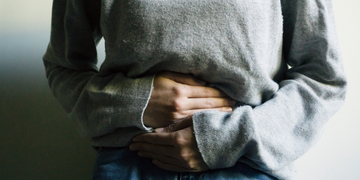What causes uterine fibroids in women?

Uterine fibroids are a common issue that women may have to manage at some point in their lives. So, how do you know if you’re experiencing fibroids? We’ll discuss what uterine fibroids are, why they happen, how to recognize signs and symptoms, and what you can do to manage them.
What are uterine fibroids?
If you have uterine growth(s), they could be uterine fibroids. Uterine fibroids are noncancerous tumors, also known as leiomyomas or myomas, that grow in and on your uterus. These growths are commonly asymptomatic and aren’t associated with an increased risk of cancer. Fibroids may be one growth or multiple clusters, each varying in size, shape, and quantity.
To categorize the type of uterine fibroid, look to its location in or on the uterus. These growths can develop on the surface of your uterus, within the uterine wall, or inside the main organ. Submucosal fibroids grow in the uterine cavity. Fibroids growing within the uterine wall are called intramural fibroids.
You can categorize fibroids located on the outside of the uterus in two ways. Subserosa fibroids connect closely to the wall of the uterus. Pedunculated fibroids, a less common form of fibroids, attach to the uterus by a thin stem.vaginal-health-probiotic
What causes fibroids?
The underlying cause for uterine fibroids is uncertain. We do know that fibroids commonly occur in women of childbearing age, though uterine fibroids are possible at any age. Factors that are associated with fibroids include:
- Genetic changes: different from typical uterine muscle cells
- Hormones: estrogen and progesterone can promote fibroid growth
- Growth factors: substances that maintain tissue
- Extracellular matrix or ECM: makes cells stick together, stores growth factors, and causes cellular change
It is sometimes possible for uterine fibroids to disappear on their own, without treatment beyond watchful waiting. In some cases, fibroids shrink after menopause due to decreased hormones, particularly a reduction in estrogen.
Signs and symptoms of uterine fibroids
It’s common for women to experience uterine fibroids at some point in their lives and, in many cases, have no symptoms. The location, size, and quantity of fibroids may impact whether you have symptoms. Possible signs of uterine fibroids include:
- Changes to menstrual bleeding (heavier and longer lasting)
- Pelvic, back, or leg pain
- Frequently urinating
- Difficulty emptying the bladder or constipation
- Pain during sex
Anemia is a possible complication of uterine fibroids. The blood loss from anemia can lead to fatigue and weakness. Uterine fibroids increase your risk for pregnancy complications such as fetal growth restriction and preterm delivery. There’s also an increased risk of needing a cesarean section for delivery.
Preventing uterine fibroids
You can’t prevent health conditions like uterine fibroids completely. However, taking care of your general wellbeing may help. Healthy lifestyle practices such as eating a balanced diet and maintaining a healthy weight may reduce your risk.uti-daily-protection-supplement
Prevention requires understanding risk factors, as well. Being a woman of reproductive age is the most common risk factor for uterine fibroids. Other aspects that increase your risk of fibroid growth include:
- Race: Black women are more likely to have larger fibroids at younger ages and experience more intense symptoms
- Genetics: highest risk if your mother or sister have experienced the condition
- Not having children
- Use of birth control
- Menstruation: starting your period at a younger age
- Late menopause: exposure to higher estrogen levels
- Weight: high body weight
- Diet: having a diet high in red meat and alcohol and low in leafy, green vegetables
Diagnosing uterine fibroids
Getting regular pelvic exams can be beneficial for both prevention and early treatment. If your primary care provider feels any irregularities in the shape of your uterus during the pelvic exam, it suggests you’re dealing with uterine fibroids. A diagnosis can be confirmed by having an ultrasound or other imaging tests like MRI or hysteroscopy. Lab tests such as a complete blood count (CBC) can rule out other diagnoses.
Treatment for uterine fibroids
Discuss your treatment options with your primary care provider and, when you do, make sure to discuss whether you plan to have children. Some treatment plans may alter your ability to have children.
If your symptoms are mild or non-existent, watchful waiting is a possible treatment. You might be prescribed medications to treat symptoms like heavy menstrual bleeding by regulating your menstrual cycle with birth control or gonadotropin-releasing hormone agonists (GnRH agonists). You may take anti-inflammatory painkillers like ibuprofen to help manage pain.
Surgical procedures may be recommended for treatment when uterine fibroids are causing more severe symptoms. These procedures can be noninvasive, minimally invasive, or traditional surgical methods.
Noninvasive treatments are methods that don’t require any incisions, and you will be able to go home the same day. Minimally invasive techniques destroy fibroids without surgically removing them. Traditional surgical methods may remove the fibroids or remove the entire uterus. Your primary care provider likely won’t recommend major surgical treatment if you want to become pregnant in the future.
Speak with your primary care provider if you’re experiencing uncontrollable bleeding or sudden and severe pelvic pain.
Keep Reading

What every woman should know about fibroid tumors
Sep 19

Does PCOS or endometriosis affect pregnancy test results?
Mar 3

What causes pelvic pain in women?
Oct 25








